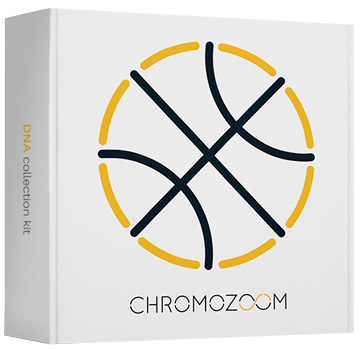Injury to tendons and ligaments
Injury to tendons and ligaments
The most common injuries related to sports are ligament and tendon injuries. The most susceptible to fatigue injuries caused by their overloading are the Achilles tendon, cruciate ligaments and the patellar tendon in the knee, the rotator cuff in the shoulder, and the tendons in the forearm and elbow. Injuries are caused by a chain of rapid or repetitive mechanical stresses, mostly during leisure and sporting activities.
Tendon damage (tendinopathy) is characterised as sore tendons accompanied by restricted movement and swelling. Tendon damage has several causes, usually a combination of internal and external factors with a high proportion of genetic predispositions. Studies have shown that the genetic predisposition to developing tendinopathy can be up to 40%. Genetic load therefore significantly increases the risk of developing tendinopathy.
Preventing damage to the Achilles tendon and knee ligaments is very important, because injuries such as these can stop you from pursuing sport for a long time. People for whom the risk is increased as a result of genetic predisposition should carefully follow preventive measures.
Sports with the highest occurrence of tendon damage
The number of cases of tendon damage in the adult world is on the increase. The reason for this is the growing popularity of recreational sports. Up to 30% of all runners have signs of tendinopathy of the Achilles tendon, with 7–9% of them having a more serious form of it. The risk of tendinopathy increases with higher exposure – it has been proven that long-distance runners have up to a 31 times higher risk of this injury compared with the control group of non-runners.Damage to knee tendons (cruciate ligaments or patellar tendons) is very common, especially in the following sports: volleyball (14%), handball (13%), basketball (12%), and athletic disciplines (7%).
In comparison with the general population, top athletes whose sports include strength moves at head level, such as tennis and baseball, are at a four times higher risk of experiencing rotator cuff damage in the shoulder.
The anatomy of healthy tendons
Tendons are soft, fibrous tissues that link muscles to bones. They are relatively passive structures able to withstand significant force. Their main job is to transfer the force created by muscles to the skeleton and facilitate movement around the joint.The transition of tendons to the bone, i.e. the insertion into the bone, is in four layers. The tendon goes into the soft cartilage zone, followed by a layer of hard cartilage than the bone mass itself. The sequential transition of soft cartilage to hard cartilage to bone provides the necessary relief of pressure and compression during limb movement. The irregular linkage of cartilage to the bone mass and the connection of the tendon to this structure increase the mechanical strength and resistance of this joint.
Tendon damage
Tendons need a minimal blood supply, meaning they can maintain tension for a long time without risking a lack of oxygen that could lead to tissue death. However, this low level of activity means healing is slow in the event of an injury.The most common causes of tendon damage are either chronic microtrauma and overloading at increased stress or, vice versa, a long-term lack of exercise. The impact of mechanical stress activates an innate immune response (inflammatory reaction) as well as the repair of damaged tissue. A healthy tendon contains 95% strong type I collagen fibres. With tendon damage, collagen synthesis is interrupted. Thus, collagen fibres are weaker and arranged in an irregular way, and they lose their firm structure. This restructuralisation is linked to reducing the mechanical resistance of the tendon and thus increasing the risk of it tearing.
Stages of tendon damage
Tendon damage can be divided into three stages. In the first stage, tendon pain appears after exercise. The tendon is painful to the touch, and swelling or light haematoma can occur. At this stage, it is possible to treat the tendon with short-term rest (around 1–2 weeks) combined with ice and the application of anti-inflammatory creams.In the second stage, the tendon hurts greatly during movement. It is a more serious condition that needs to be resolved with more long-term rest (at least 3 weeks) combined with ice and shockwave treatment, the positive effect of which has been confirmed by many studies. Rehabilitation is also an extremely important part of treatment. It has been proven that mild activity at the location of the injury leads to higher activation of the repair mechanisms and therefore faster healing. It is very important to limit the occurrence and spread of inflammation (recognisable from the increased temperature of the area and its swelling), because inflammation heals by creating a scar and can permanently affect the structure and function of the tendon.
The third stage is the actual ligament tear, which needs to be fixed surgically, ideally within 24 hours of the injury.
